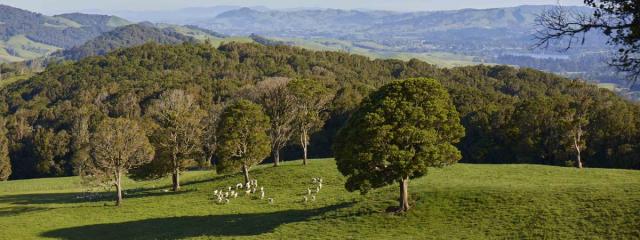Knowing your on-farm GHG numbers will mean you can understand the implications of policy changes, plan for the future, and increase your business resilience.

Agricultural greenhouse gas emissions have been top of mind with the recent emissions pricing consultation. While B+LNZ and other He Waka Eke Noa Primary Sector Climate Action Partnership participants develop final advice to Government about an alternative to the Emissions Trading Scheme (ETS), we haven’t lost sight of other key aspects of He Waka Eke Noa – especially the milestone of all farmers knowing their on farm greenhouse gas (GHG) emissions numbers by the end of this year.
B+LNZ general manager Corina Jordan says our sector has made excellent progress towards the milestone, and this shows we’re leading the world – however there’s more to be done.
“Our sector should be justifiably proud of the fact that 50 percent of sheep and beef farmers already know their annual total on-farm emissions. At the end of 2021 the target was 25 percent and we had already exceeded that.
“This helps us show our sector is committed to playing its role in tackling climate change. New Zealand farmers are way ahead internationally in knowing their numbers.”
Corina says that while we should celebrate success to date, there’s still a lot of work to do to ensure remaining farmers know their numbers.
“We’re doing all we can to support all farmers to understand the importance of knowing their numbers and to make it easy for them to get started.
“Knowing your numbers will mean you’re prepared for emissions pricing – which will be introduced in 2025 – and what it’ll mean for your farming business. Knowledge really is power – if you’re prepared you can make sound business decisions. Get informed early so you can understand any opportunities and unlock revenue streams.”
These include on-farm sequestration, something that has been a fundamental part of B+LNZ’s approach to developing an alternative to agriculture going into the ETS.
“To help farmers get on the journey, B+LNZ has developed resources such as the B+LNZ GHG Calculator and is partnering with others to provide tangible support. We’re putting on workshops with processors around New Zealand. Talk to your processor about upcoming workshops, keep an eye on local B+LNZ events or contact your B+LNZ extension manager,” says Corina.
“These world-leading workshops have been hugely successful and farmers report feeling informed and prepared after attending.
“You could also talk to your accountant – we’ve been working with them and helping them help farmers with the calculations.”
Corina notes that B+LNZ is working with other partners such as banks to build understanding of the GHG Calculator.
“There are also other GHG calculation tools available – so whatever works for you, get started today.”
Another key He Waka Eke Noa milestone – 25 percent of farmers having a plan to manage their emissions by the end of 2021 – fell slightly short, at 21 percent of all farms. Corina says this was due to COVID-19 restrictions impacting on the ability to hold further workshops aimed at developing the plans. With restrictions easing, B+LNZ is ramping up efforts again.
B+LNZ’s ‘Responding to a changing climate: know your numbers’ workshops not only step farmers through B+LNZ’s GHG Calculator – they also guide them through the development of their GHG action plan. Farmers can also discuss actions that can be taken to sustainably manage emissions.
“These are big issues for individual farms and for our sector,” says Corina. “B+LNZ is committed to supporting farmers every step along the way.
“In parallel, we’re working hard on ensuring that the emissions pricing system that is introduced is more practical and fair than the ETS and will incentivise farmers to make positive change.
“We’re also working to build understanding and support for reporting on warming as well as emissions and using this approach to challenge the Government’s methane reduction targets.”